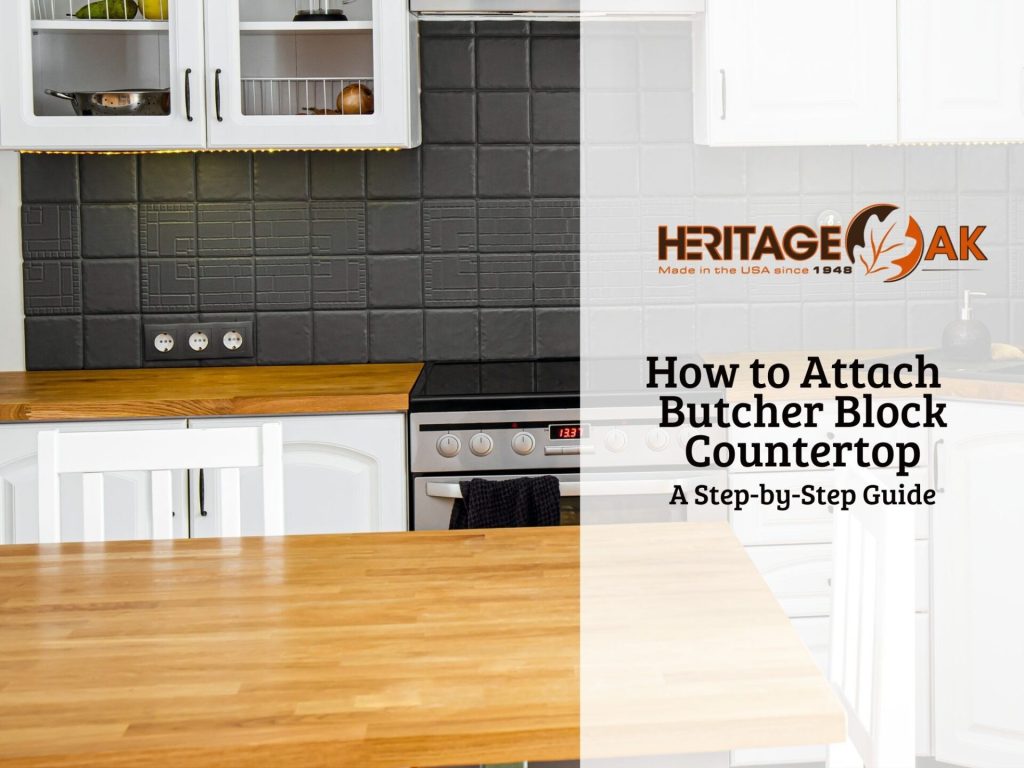Let's Get Started
If you're looking to add a touch of warmth and character to your kitchen, a butcher block countertop can be a fantastic choice. Not only does it provide a beautiful and natural look, but it's also a durable and functional surface for food preparation. However, installing a butcher block countertop may seem like a daunting task. In this blog post, we will guide you through the process of attaching a butcher block countertop, ensuring a secure installation.
How to Attach Butcher Block Countertop to Cabinets
Before jumping in, let's make sure you have all the necessary tools and materials at your fingertips. You'll need a measuring tape, screws, a power drill, a level, and some silicone adhesive.
Step 1: Measure and Cut
Start by measuring the dimensions of your cabinets and mark those measurements on your butcher block countertop. To get the perfect fit, use a circular saw or a jigsaw to cut the countertop to the desired size. Take your time and double-check your measurements to avoid any mishaps. While butcher block countertops are reasonably priced, making mistakes can end up being costly. This is why most homeowners invest in a professional installation for their custom countertops.
Step 2: Prepare the Surface
Now, it's time to remove any existing countertops and ensure the cabinets below are in good condition. Clear out your cabinets to give them a good cleaning and ensure they're leveled, as any unevenness can affect the installation.
Step 3: Sand and Seal
Once the butcher block countertop is cut to size, sand down the edges and surfaces to create a smooth finish. Start with a coarse-grit sandpaper and gradually work your way up to a finer grit. After the butcher block is prepped and the cabinets are ready, apply a bead of silicone adhesive along the top edges. This will create a strong bond between the countertop and the cabinets, ensuring stability and longevity.
Step 4: Attach the Countertop
With the adhesive in place, it's time to carefully lift the butcher block countertop and position it onto the cabinets. Place the countertop onto the prepared surface and ensure it fits snugly. Pay close attention to aligning it with the edges and corners of the cabinets for a seamless look. To ensure a level surface, use a trusty level to check if the countertop is perfectly horizontal. Use a combination of wood glue and screws to firmly secure the countertop to the cabinets below. This step is crucial for a sturdy and long-lasting installation. Be sure to follow the manufacturer's instructions for the specific type of adhesive and screws you are using.
Step 5: Apply a Finish
To enhance the natural beauty of the butcher block countertop and protect it from everyday wear and tear, apply a coat of food-grade mineral oil or a specialized countertop finish for non-food work areas. This step will not only keep your countertop looking its best but also make it easier to clean and maintain.
Read more on this topic:
Butcher Block Countertop Oil and Process: What You Need to Know
How to Finish Butcher Block Countertops: Staining
That's a Wrap
Attaching a butcher block countertop will not only spruce up your kitchen but also create a functional and inviting workspace. Just remember, proper maintenance and regular resealing will help extend the life of your countertop. With your new butcher block countertop in place, you’ll enjoy a kitchen that's both stylish and practical, making it the heart of your home. If it’s time to update your kitchen countertops, give Heritage Oak a call!
